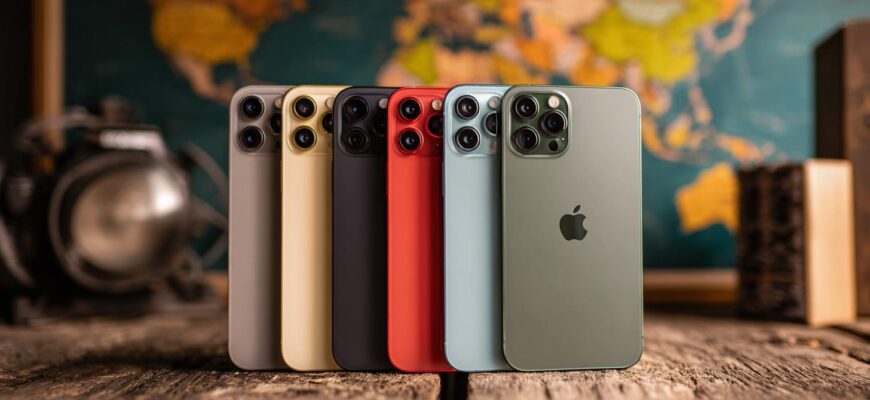Buying a brand-new iPhone 17 is a modern ritual: you read the reviews, salivate over the camera specs, and then blink at the price. But beyond the glossy ads and keynote theatrics there’s a simple, sobering question many of us ask: how many hours, days, or weeks of work does it actually take to afford this device where you live? This article breaks that down in a friendly, practical way. We’ll walk through assumptions, compare a set of countries, and give tools and tips so you can decide whether you want to save, trade in, or hunt for bargains. Think of this as an eye-opening price-of-luxury snapshot across the world — useful whether you’re planning a purchase, traveling, or just curious about global purchasing power.
- What we mean by “how long to work to buy an iPhone 17”
- Methodology — the simple math behind the comparison
- Quick comparison table: hours to buy an iPhone 17 (approximate)
- How to read this table
- Why the differences are so big
- Practical ways to reduce the hours you need to work
- Extra perspectives: hours vs. happiness
- Want to run your own numbers?
- Long-term trends: will it get easier or harder?
- Country-specific notes and things to watch
- Final practical checklist before you buy
- Conclusion
What we mean by “how long to work to buy an iPhone 17”

First, let’s set expectations. When we ask “How long do you need to work in different countries to buy an iPhone 17?”, we’re estimating how many hours of paid work a typical worker would need to cover the cost of a base iPhone 17. This is not a perfect science: wages vary by region, taxes and duties differ, and Apple sometimes prices devices differently in each market. For clarity, we assume a base iPhone 17 retail price of $999 USD before local taxes and then convert to local currencies with a modest VAT/GST estimate. Wages are rough averages for take-home (net) hourly pay — again, approximations meant to illustrate differences in buying power rather than to be definitive salary reporting.
Methodology — the simple math behind the comparison
To keep things transparent, here’s the method used so you can reproduce or adjust it for your own country or model. Step 1: Start with a $999 USD base price for the iPhone 17. Step 2: Convert to local currency and add a typical VAT/GST percentage for that country (we used commonly encountered rates like 20% for parts of Europe, 10% for Australia/Japan, etc.). Step 3: Divide the final local price by an estimated net hourly wage to get “hours of work needed.” Step 4: Convert hours into 8-hour workdays and 40-hour workweeks so the result feels intuitive. Remember: these are approximate, illustrative figures — a tool for comparison, not a legal or financial document.
Quick comparison table: hours to buy an iPhone 17 (approximate)
| Country | Estimated local price (incl. tax) | Estimated net hourly wage | Hours of work needed | Workdays (8h) | Workweeks (40h) |
|---|---|---|---|---|---|
| United States | $999 | $25 / hour | ~40 hours | ~5 days | ~1.0 week |
| United Kingdom | £970 | £15 / hour | ~65 hours | ~8.1 days | ~1.6 weeks |
| Germany | €1,103 | €18 / hour | ~61 hours | ~7.7 days | ~1.5 weeks |
| France | €1,103 | €15 / hour | ~74 hours | ~9.2 days | ~1.8 weeks |
| Canada | C$1,536 | C$22 / hour | ~70 hours | ~8.7 days | ~1.8 weeks |
| Australia | A$1,648 | A$30 / hour | ~55 hours | ~6.9 days | ~1.4 weeks |
| Japan | ¥164,835 | ¥1,700 / hour | ~97 hours | ~12.1 days | ~2.4 weeks |
| China | ¥8,251 | ¥40 / hour | ~206 hours | ~25.8 days | ~5.2 weeks |
| India | ₹97,714 | ₹200 / hour | ~489 hours | ~61.1 days | ~12.2 weeks |
| Brazil | R$6,141 | R$10 / hour | ~614 hours | ~76.8 days | ~15.3 weeks |
| South Africa | R21,254 | R40 / hour | ~531 hours | ~66.4 days | ~13.3 weeks |
How to read this table
These numbers show relative affordability and buying power. For example, in the United States our estimate suggests roughly a standard workweek (or about five 8-hour days) could pay for a base iPhone 17 at full retail. In contrast, in Brazil or India, the same device can represent several months of typical work. The variation reflects both local price adjustments and differences in average wages.
Why the differences are so big
Three big forces create the disparity: local wages, taxes/customs/import tariffs, and currency conversion. Countries with higher average incomes (and generally higher productivity) make luxury electronics relatively more affordable. Meanwhile, countries with heavy import duties, high sales tax, or weaker currency will see the same phone cost a larger share of the average worker’s paycheck. Apple’s own pricing strategy also matters — sometimes Apple sets higher local margins or includes extra features/options that shift the number.
Practical ways to reduce the hours you need to work
- Buy used or refurbished: A one- or two-year-old model can drop in price dramatically while still offering great performance.
- Trade in your old phone: Trade-in credits can shave hundreds off the price of a new iPhone 17.
- Shop tax-free zones or duty-free while traveling: If you live in or visit a tax-free area, you might save on VAT.
- Choose installment or financing plans: Many carriers and stores let you spread payments without a big upfront hit.
- Look for promotions: Black Friday, back-to-school, or carrier deals can significantly reduce the effective price.
- Consider carrier subsidies: In some countries carriers offer discounted handset pricing in exchange for fixed-term contracts.
Extra perspectives: hours vs. happiness
It’s worth remembering that “hours to buy an iPhone 17” is a narrow metric. Owning the latest phone can be exciting and useful, but there’s real value in assessing opportunity cost. Would those same hours be better spent on emergency savings, a course that boosts your income, or a short trip with family? For some, upgrading every generation is enjoyable and worth the cost. For others, waiting a generation or buying refurbished delivers most of the benefit for a fraction of the cost. Use this calculation as a data point to make a decision that aligns with your budget and priorities.
Want to run your own numbers?
If you want to personalize the calculation, here’s a simple formula you can use: (Local iPhone price including tax) ÷ (Your net hourly wage) = Hours needed. Then divide hours by 8 to get days and by 40 to get weeks. That’s it — quick, transparent, and adaptable for any country or any phone model. If you’re shopping across borders, remember to factor in local warranties, the cost of shipping, and compatibility with local networks.
Long-term trends: will it get easier or harder?
A few trends will shape these comparisons over time. If wages rise faster than electronics prices, devices become more affordable. If companies shift to more regionalized pricing or face higher import barriers, they can become less affordable in certain markets. Currency fluctuations can have immediate effects: a sudden depreciation can make an imported device much pricier overnight. Finally, the growth of installment plans and trade-in programs has made the short-term cost of ownership feel more manageable even when the underlying hours-to-buy metric remains unchanged.
Country-specific notes and things to watch
- United States: Price typically shown without sales tax, which varies by state. Opportunistic shoppers can take advantage of tax-free weekends in some states.
- European countries: Price often includes VAT, which can be reclaimed by non-residents in certain circumstances.
- Japan and Australia: Historically competitive pricing and periodic promotional offers make them interesting markets for buyers traveling from nearby countries.
- Emerging markets (India, Brazil, South Africa): Heavy taxes and lower average wages mean flagship phones represent a larger life-savings decision for many people.
Final practical checklist before you buy
- Check local price with tax included — that’s your real number.
- Calculate hours based on your actual take-home hourly wage.
- Look for trade-in and carrier deals that lower the effective cost.
- Consider refurbished models to cut hours needed by a large margin.
- If traveling, confirm warranty and network compatibility before buying abroad.
Conclusion
Understanding how long you need to work to buy an iPhone 17 exposes the real-life cost of headline prices and helps you make a smarter purchase decision; in some countries it’s about a single week’s work, while in others it can represent several months of labor, and by using simple math and considering alternatives like trade-ins, refurbished phones, or installment plans you can often reduce the time-to-own substantially — balance your desire for the latest tech with your financial goals and choose the path that fits your circumstances.
Visit https://themors.com/ for more in-depth articles, real-world buying guides, country comparisons, and practical tips on stretching your tech budget — there’s a lot more to explore and tools to help you find the best deals and smartest strategies for buying electronics worldwide.









